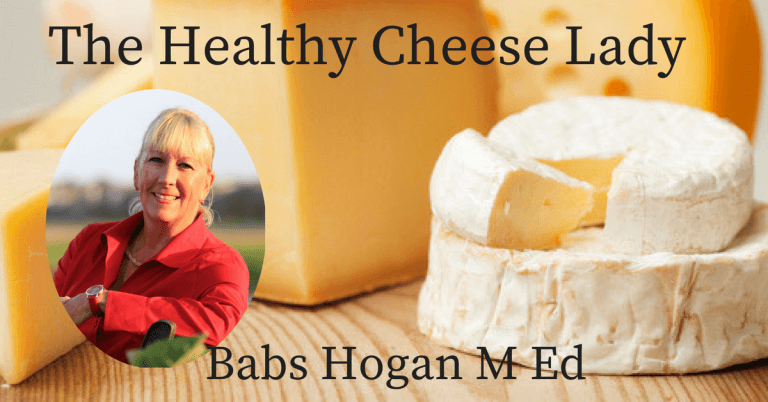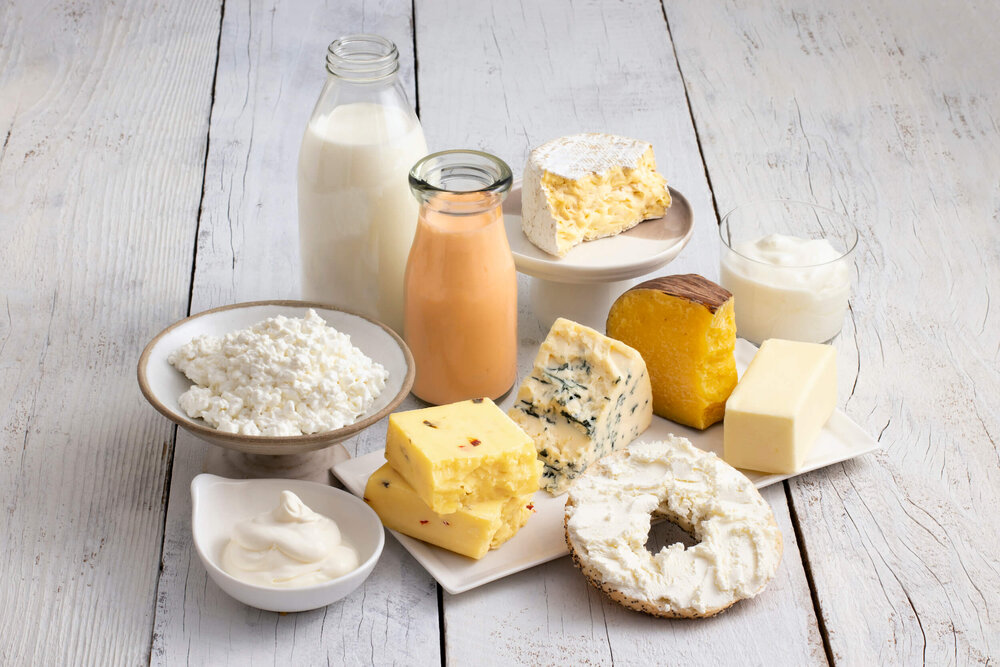
As far as word association goes, one would not necessarily imagine that “cheese” is commonly matched with “healthy.” In fact, in the European Union, there is a move by the regulating body for health and nutrition to mandate a “traffic light” rating system for all retail foods, where traditional and artisanal products like cheese often score poorly due to high fat or salt content.
But the “high-fat equals bad” mindset when it comes to high-quality, artisanal products like cheese, is an outdated—and even potentially dangerous—way of thinking, according to some nutrition experts. A January 2017 report by Harvard University, for instance, revealed that dairy fat “was not associated with a higher risk of cardiovascular disease when compared to the same amount of calories from carbohydrates.”
Babs Hogan, health professional, writer, and educator, (and former board member of her local chapter of the American Heart Association,) has a personal mission to change the common thinking around cheese and health, specifically as it relates to the United States’ propensity for low-fat, high-carb diets. “The research is out there, the message is out there,” says Hogan, “but 49% of the American adult population is still following a low-fat diet.”
Hogan’s own journey from American Heart Association advocate to self-proclaimed “Healthy Cheese Lady” begins, as many good stories do, with a slight marital squabble. While Hogan’s husband started to dabble in cheesemaking, “I spent decades avoiding cheese and saturated fats because that’s what was taught in my field,” says Hogan. “So, when my husband went to Montreal in 2011 for his first American Cheese Society meeting, and came back all fired up about cheese, I thought, ‘this is ridiculous; You’re asking me to embrace a food that is unhealthy, will make you fat, and give you heart disease.’” But she promised to do her research, interviewed 30 cheesemakers across Texas, and came to one conclusion: “I was wrong.”
Healthy Cheese Lady photo courtesy Babs Hogan
Now, as the Healthy Cheese Lady she wants to reshape the thinking about the health benefits of high-quality, full-fat cheese. “Some saturated fats can be bad, but some can be really good for you,” says Hogan. Echoing the language of the Harvard study above, “the structure of saturated fats in dairy is different than in other types of protein and fats. I’ve spent 30 years of my career giving the wrong message about fat.”
As for sourcing cheese that is “high-quality,” that begins locally, instructs Hogan. “Artisan cheese versus commodity cheeses, they are miles apart nutritionally. (You) need to be looking for local cheese makers, producers, and shops. People trained to know about the animals, and what they eat, and how the cheese is made.” Grass-fed cheeses with minimal processing—and especially raw milk cheeses—offer the most health benefits.
As with any calorie-dense food, like cheese, appropriate portioning is key, but here are 5 ways that full-fat, high-quality cheese is actually good for your health.
Health Benefits of Cheese
1. Cheese as a Whole/Functional Food
Artisan cheese is made by harnessing natural processes and is considered a “whole”—i.e. “unprocessed”—food. “Processing reduces, eliminates, and destroys a lot of nutrients the food might have in its whole form,” says Hogan, and the best cheeses hold on to their maximum nutritional benefits because of their unprocessed nature. In a medically reviewed Healthline report, it notes that “Whole foods (including cheese) are generally good for you, as long as you don’t eat too much of one thing.” Beyond that, cheese is also what’s considered a “functional food,” meaning that it has nutritional benefits beyond the pure energy derived from its calories. Those additional benefits are what Hogan believes starts to move cheese into superfood potential.

2. Microbial Benefits
“Gut health” has been on parade lately as one of the most important factors for both physical and mental well-being. “Every illness, every sickness, every disease, starts in the gut,” echoes Hogan. (If you have a mind for biochemistry, she recommends the science-heavy read “Cheese and Microbes” by Catherine Donnelly.) If you take a daily probiotic, then you’re at least theoretically already hip to this knowledge. Your gut is a microbiome that consists of zillions of bacteria, some types of which are rock stars when it comes to a healthy gut, and from there a healthy mind and body. Cheese, derived from several strains of bacteria, is in fact a delivery method for beneficial microbes.
Dairy products photo credit California Milk and Jill Hough Group
3. Vitamin K2
Most people with even a limited understanding of nutrition know that dairy products, like cheese, have a significant dose of calcium, which has benefits not only for bone health, but also for your cardiovascular, muscular, and nervous systems. The lesser known nutritional star of high-quality cheeses, however, is Vitamin K2, often found in cultured or fermented foods, including cheese and yogurt, which is calcium’s most vital companion and plays a role in blood coagulation. “Vitamin K2 is a really big deal,” says Hogan, “what it does is, it shuffles the bad calcium out of your arteries and into your bones or teeth and away from your heart.” Compared to other cultures, especially Asian cultures, whose cuisines more commonly include fermented foods—such as kimchi or natto—a staggering percentage of Americans are lacking in Vitamin K2 consumption. (One study put that number as high as 97%.)
4. Blood Sugar Regulation
Most cheeses have a low-glycemic index, which is a measure of how quickly various foods cause an increase in blood glucose levels. Whether a full-on Keto diet is appropriate for all adults, its high fat/low carbohydrate structure is especially beneficial when it comes to managing blood sugar in diabetics. Hogan cites the research of Dr. Sarah Greenberg at Virta Health and how a higher-fat diet that includes high-quality cheese can not only play a part in regulating blood sugar, but actually can have the effect of reversing diabetes.

5. Obesity Prevention
File under “French paradox.” Conjugated linoleic acid, or CLA, is a compound found in certain high-fat cheeses that can help prevent obesity and heart disease. (The temptation is strong here to just have the headline be “Blue Cheese Prevents Obesity: Dreams Come True” and leave it at that.) According to Hogan, she believes that one of the biggest benefits that people don’t realize about full-fat cheeses is how CLA affects leptin, a hormone that triggers fullness. “That satiety is a really big deal with full-fat cheese, when compared to high carb diets. (In the latter,)” Hogan explains, “that leptin doesn’t get signaled, and you always feel hungry.” In short, a life without cheese is unsatisfying in more than one way.
For more information about cheese and health:
Babs Hogan’s website Healthy Cheese Lady
Spoiler alert—the studies found no link between the consumption of dairy products and deaths from either cardiovascular disease or all causes.
Spoiler alert—dairy consumption was associated with lower risk of mortality and major cardiovascular disease events in a diverse multinational cohort.
